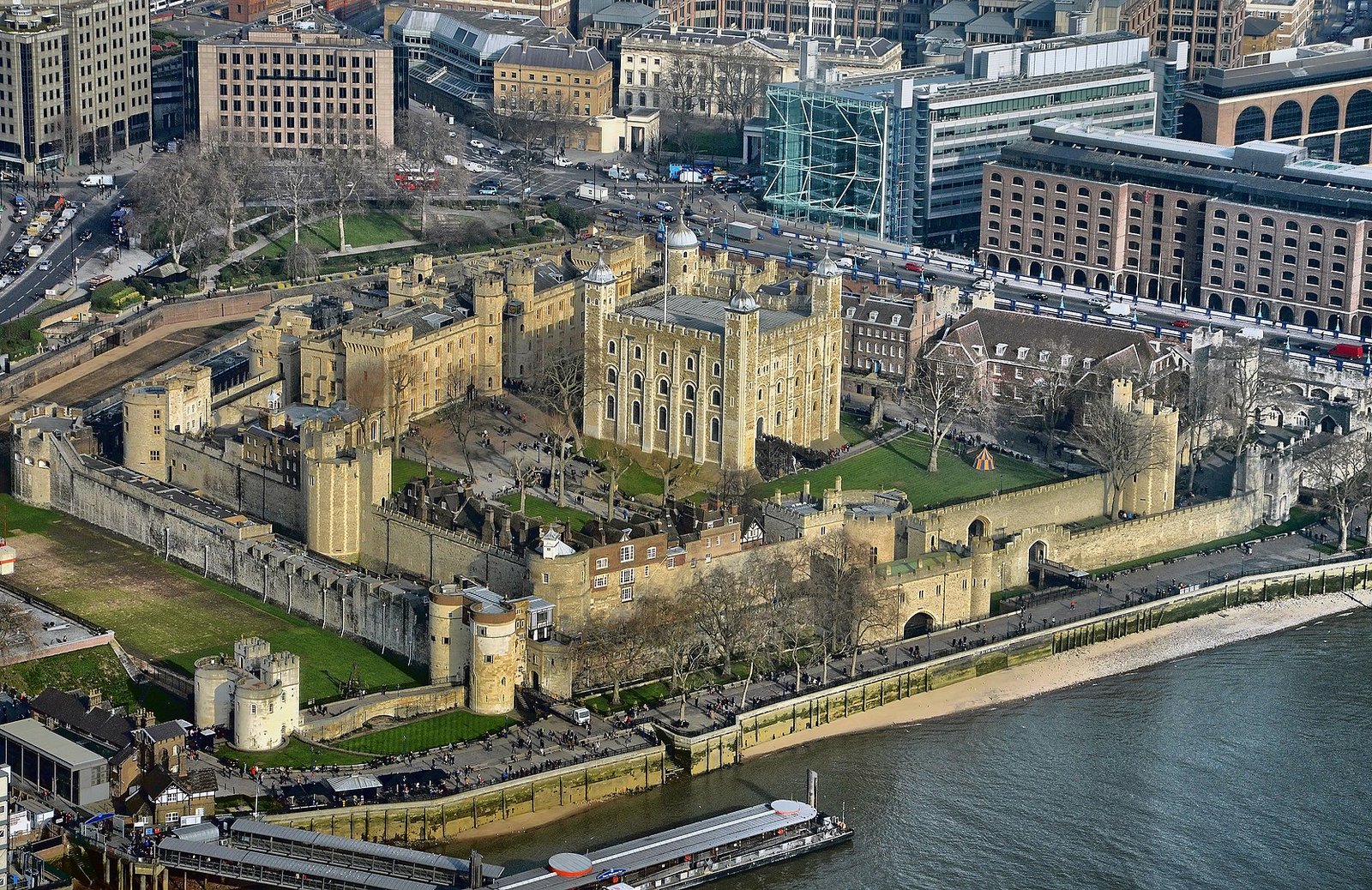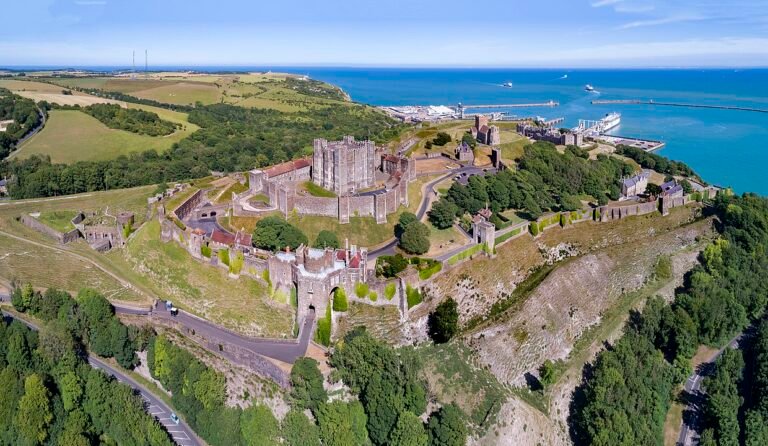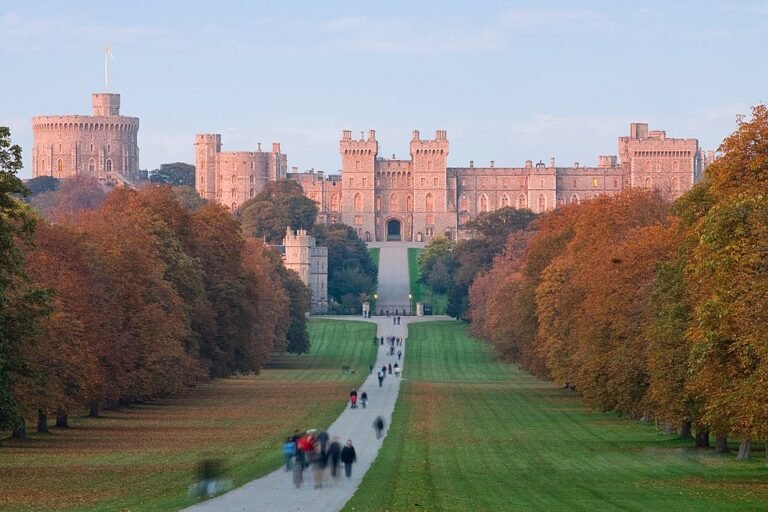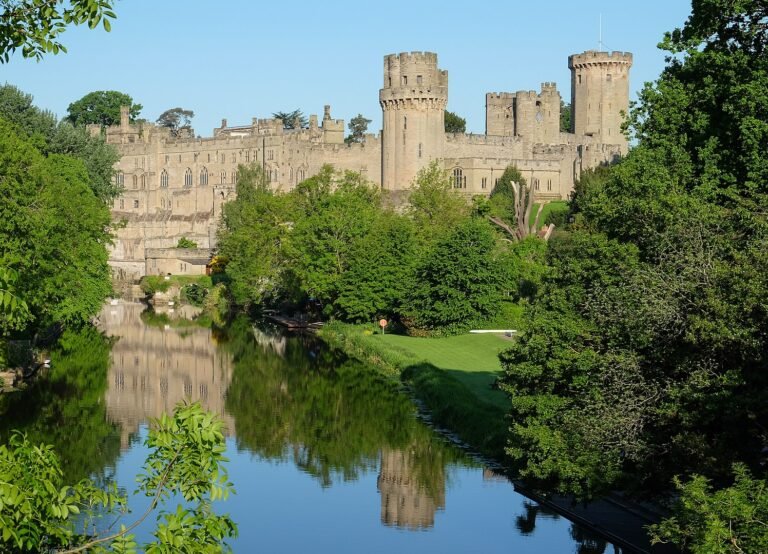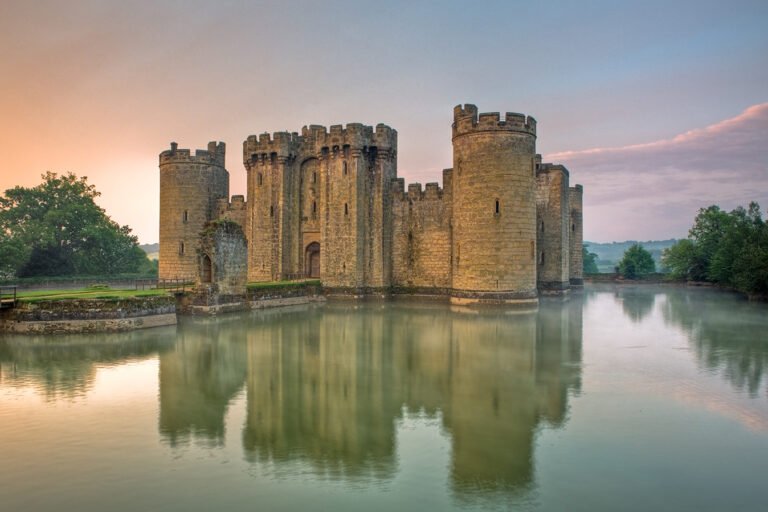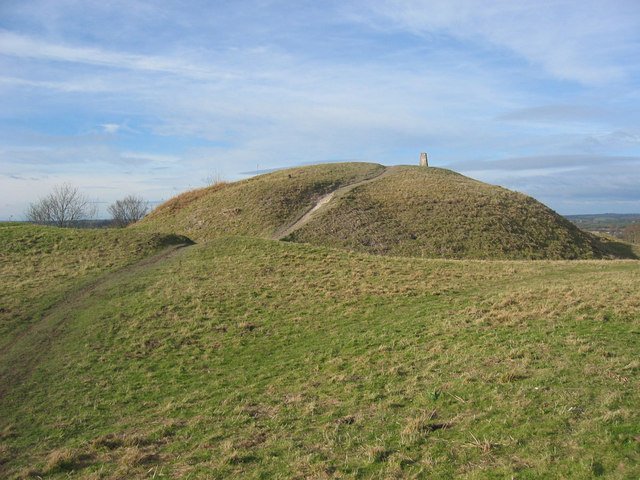Tower of London: A Storied Fortress for Every Kind of Traveller
Tower of London: The Tower of London, officially known as His Majesty’s Royal Palace and Fortress of the Tower of London, stands as one of the UK’s most iconic and historic landmarks. Centrally located on the north bank of the Thames in the London Borough of Tower Hamlets, this imposing complex spans 12 acres at the heart of the capital.
Anchored by the White Tower, built by William the Conqueror around 1078 and a symbol of Norman power, this fortress has borne witness to nearly a millennium of British history. Once reviled, it now welcomes nearly 2.8 million visitors annually, drawn by its royal secrets, dramatic tales and spectacular setting.
Tower of London: A Storied Past – From Royal Keep to Prison to Jewel House
Origins & Evolution
The Norman monarch built the White Tower as both a throne and a stronghold in the late 11th century. Over the centuries, successive expansions added walls, wards, and towers that created the layered complex we explore today.
Roles Through Time
Legendary roles include royal residence, armoury, prison, execution site (including some of Henry VIII’s wives), and mint. It also houses the Crown Jewels and remains a ceremonial site for the Tower of London’s historic military traditions. From Roman roots to a modern heritage site, its layered past is palpable in every stone.
Cultural Recognition
Today, the Tower is both a UNESCO World Heritage Site and the official home of the Crown Jewels. It also remains the operational base for the Royal Regiment of Fusiliers.
What to See: Highlights Inside the Walls
- Crown Jewels & Waterloo Barracks — The dazzling heart of the tower and a must-see early in your visit to avoid crowds.
- White Tower — Explore this Norman keep, including the Chapel of St John and the haunting bones of Edward V and his brother.
- Yeoman Warder (Beefeater) Tours — Free and richly anecdotal, these tours are led by uniformed custodians steeped in Tower lore.
- Battlements, Medieval Palace, Bloody Tower & more — Scattered across the complex, each area brings a slice of medieval life, intrigue, or history.
- Ravens — The Tower’s famous feathered guardians are fascinating to observe, embedded in legend and history.
- Ceremony of the Keys — The nightly ritual at around 9:52 pm locks the fortress as it might have for centuries. Tickets are coveted and must be booked independently.
Practical Information & Planning Tips
Times & Tickets
- Opening Hours (subject to seasonal variation):
- Summer (Mar–Oct): Tue–Sat from 09:00 or 10:00 until ~17:30; Sun–Mon open from 10:00.
- Winter (Nov–Feb): Similar hours, closing earlier around 16:30.
- Plan arrival at opening for the best experience and shorter queues.
- Ticketing (estimated rates):
- Adult: ~£35.80
- Child (5–15): ~£17.90
- Under 5: Free
- Advance online booking is strongly recommended to skip the ticket queue.
Getting Here
- Tube: Tower Hill station (District & Circle lines) — about a 5-minute walk.
- Bus: Routes 15, 42, 78, 100, RV1 stop nearby.
- Riverboat: Thames river service to Tower Pier.
- Walking: Stroll along the Thames — scenic from City landmarks like St Paul’s or Borough Market.
Visitor Tips
- Allow 2.5–4 hours — Three hours is a smart average, with time for key highlights and a break at New Armouries Café.
- Bag checks & restrictions — Security is strict: small bags only (no large luggage or prohibited items).
- Best times to visit — Quietest months: January–March. Mid-week mornings (especially Tues–Thurs) help avoid crowds.
- Photography — Allowed broadly except inside the Jewel House, certain chapels and towers.
- Facilities — Accessible restrooms and baby-changing facilities available; buggy park outside White Tower. Accessibility is improving, but ancient structures pose challenges. No luggage storage on site.
Sample Itineraries
1-Day Local:
- Morning (09:00–12:00) — Arrive at opening, tour Crown Jewels, take Beefeater tour, explore White Tower.
- Lunch (12:00–13:00) — New Armouries Café.
- Afternoon (13:00–15:30) — Visit Medieval Palace, Battlements, Ravens, Bloody Tower.
- Optional Evening — Attend Ceremony of the Keys (book well in advance).
2-Day Royal & Historic Loop:
Day 1
- Morning: Tower visit as above. Afternoon: Walk to nearby Tower Bridge, explore the City of London.
- Evening: Thames dinner cruise or riverside stroll.
Day 2
- Morning: Westminster Abbey, Parliament Square.
- Afternoon: Walk along the Thames to the South Bank; enjoy Tate Modern or Borough Market food tour.
Where to Eat & Stay Nearby
Near the Tower
Simple, polished options like The Chamberlain (pub and Edwardian-style hotel) offer comfort suited to families, couples or solo travellers.
Borough Market and the South Bank offer lively dining just a short walk away.
Beyond
Covent Garden, Shoreditch, and South Bank provide boutique hotels, street food and cultural buzz that make excellent bases for exploring deeper into London’s rhythm.
Broader UK Connections
The Tower of London exemplifies the UK’s layered heritage. Whether it’s regional castles in Northumberland, royal estates like Windsor or heritage trails from Cornwall mines to Hadrian’s Wall, this fortress acts as both a starting point and a grand highlight.
- Heritage tourism stretches beyond London — think stately homes, industrial heritage, and coastal ruins across the UK.
- The Tower’s theatrical mix of gory history, royal ceremony, and architectural might mirrors stories found all over Britain — from Edinburgh Castle to the Roman wall up north.
Final Take
The Tower of London delivers a rich, immersive dive into Britain’s layered past, blending royal spectacle, dark drama, and enduring ritual. With thoughtful planning, this citadel can thrill families, inspire couples and satisfy solo adventurers alike. Let its stories guide your next UK journey beyond the walls.
FAQs: Tower of London
What is the Tower of London?
The Tower of London is a historic castle located in central London on the north bank of the River Thames. It is a UNESCO World Heritage Site and one of the world’s most famous fortresses. Throughout its history, it has served as a royal palace, a prison, a treasury, and a place of execution.
Where is it located?
The Tower of London is situated in the London Borough of Tower Hamlets, in the heart of central London. It is easily accessible via the London Underground, with the closest station being Tower Hill.
What is its historical significance?
The castle was founded by William the Conqueror in 1066. Its central structure, the White Tower, was built in the 1070s. Over the centuries, it became a symbol of royal power and a site of both splendour and terror, holding famous prisoners like Anne Boleyn and Sir Walter Raleigh. It also housed the Royal Mint and the Crown Jewels.
What are the main attractions at the Tower of London?
Visitors can see the iconic Crown Jewels, a collection of the British monarchy’s regalia. You can also explore the White Tower, walk the outer walls, and see the ravens, which are said to protect the kingdom. The Yeoman Warders, or “Beefeaters,” provide entertaining and informative tours, sharing stories of the Tower’s history.
Is the Tower of London open to the public?
Yes, the Tower of London is a popular paid visitor attraction. It is open to the public year-round, though it is advised to book tickets online in advance to guarantee entry and avoid queues.
